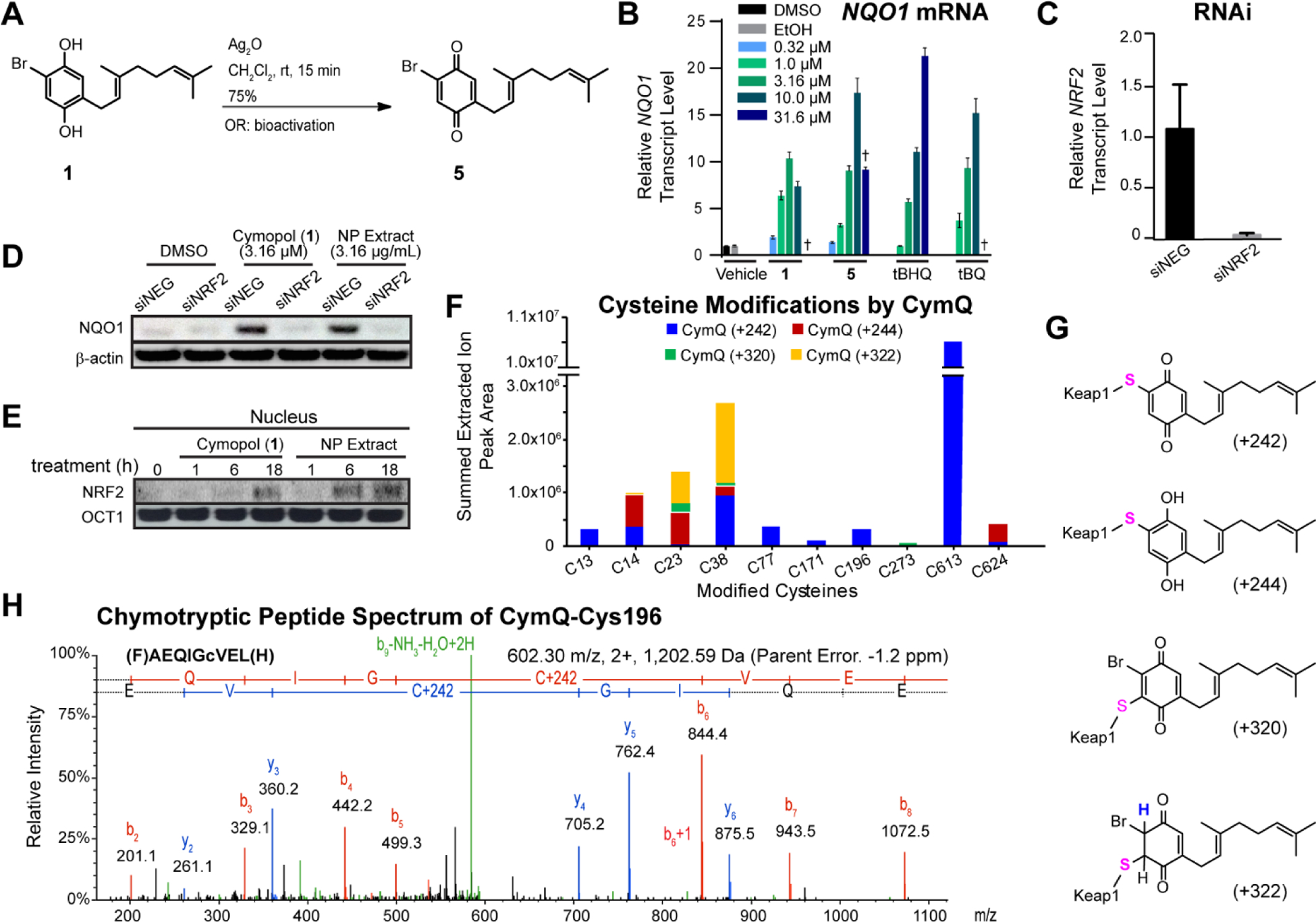Fig. 2.

Mechanism of action of Nrf2 activation by cymopol. (A) Silver catalyzed oxidation reaction of cymopol (1) to form the corresponding cymopol quinone (5). (B) IMR-32 cells were treated for 12 h with cymopol (hydroquinone) and its corresponding quinone, alongside structurally related positive control tBHQ and its active quinone metabolite, tBQ, and mRNA levels of the Nrf2 target gene NQO1 assessed (n = 3). Cymopol quinone and tBQ are able to induce NQO1 similar to that of their hydroquinone counterparts in a dose-dependent manner. (C) Knockdown efficiency of the siNRF2 in IMR-32 cells after 48 h (n = 3). (D) Nrf2 is required for the induction of NQO1 protein levels for cymopol and the NP extract. (E) Cymopol and the NP extract induce Nrf2 nuclear translocation and possibly also stabilization of nuclear Nrf2 in IMR-32 cells. (F, G) Summed CymQ modifications for different cysteines of Keap1 protein from three separate experiments using five different sample preparation conditions. The total ion current (TIC) peak area (>95% confidence level) for each CymQ adduct (242, 244, 320 and 322) from all experiments were summed for individual cysteine residues where modification occurred. The most abundant modification across multiple cysteine residues was shown to be with CymQ(+242) adduction. (H) Representative chymotryptic peptide spectrum containing CymQ(+242) alkylated Cys196.
